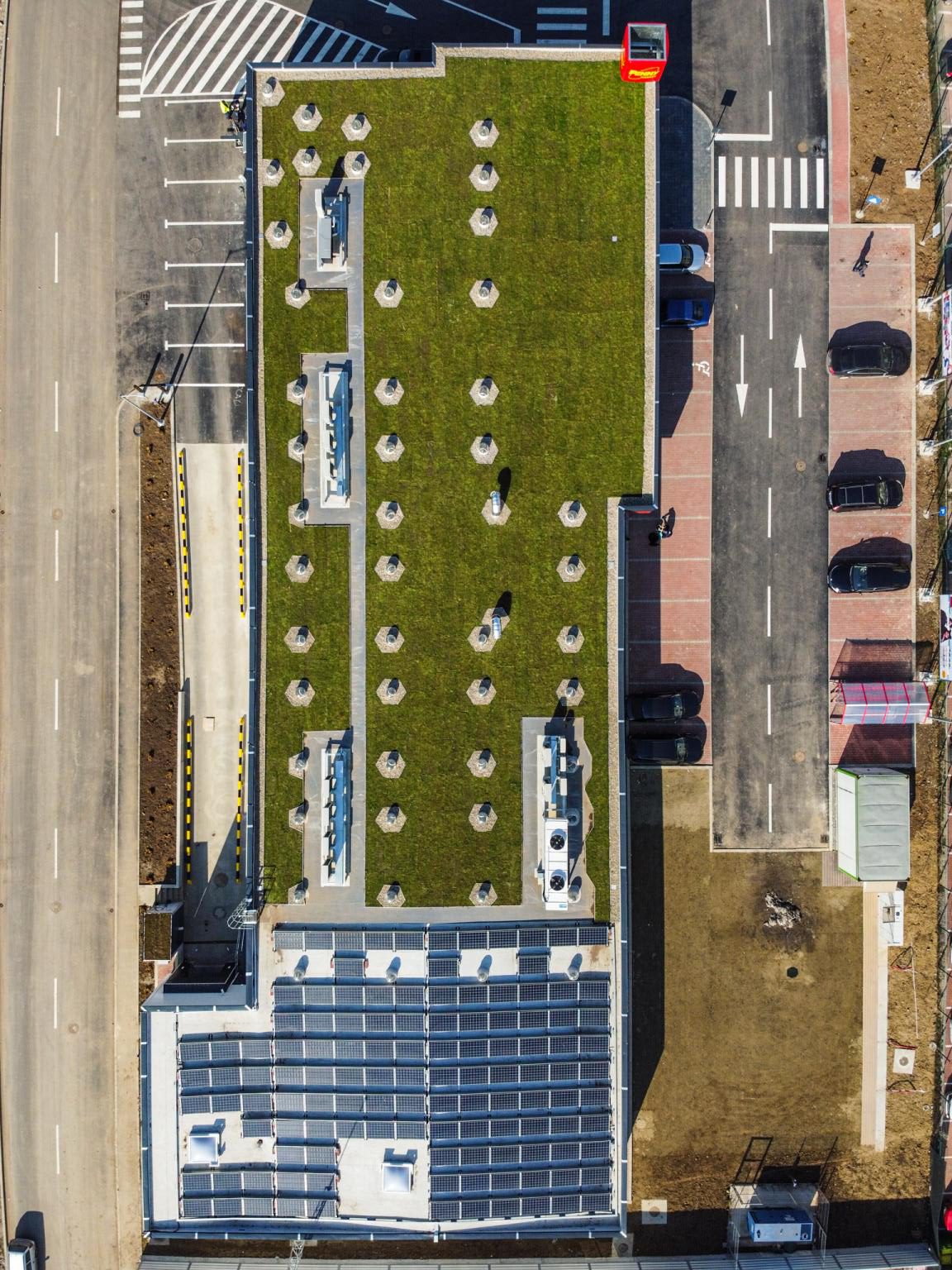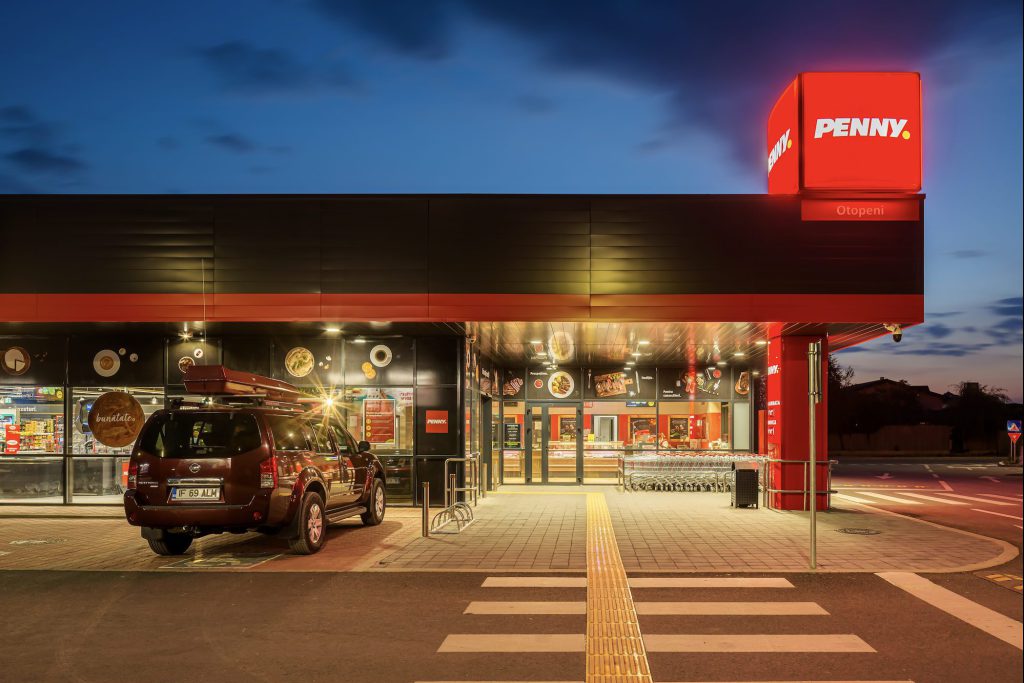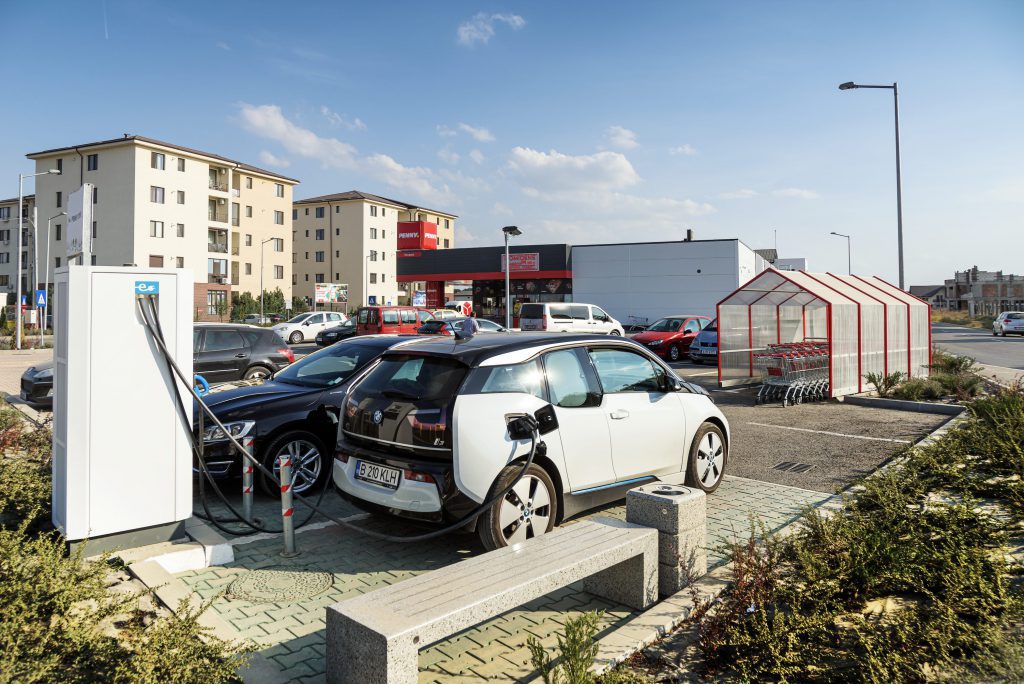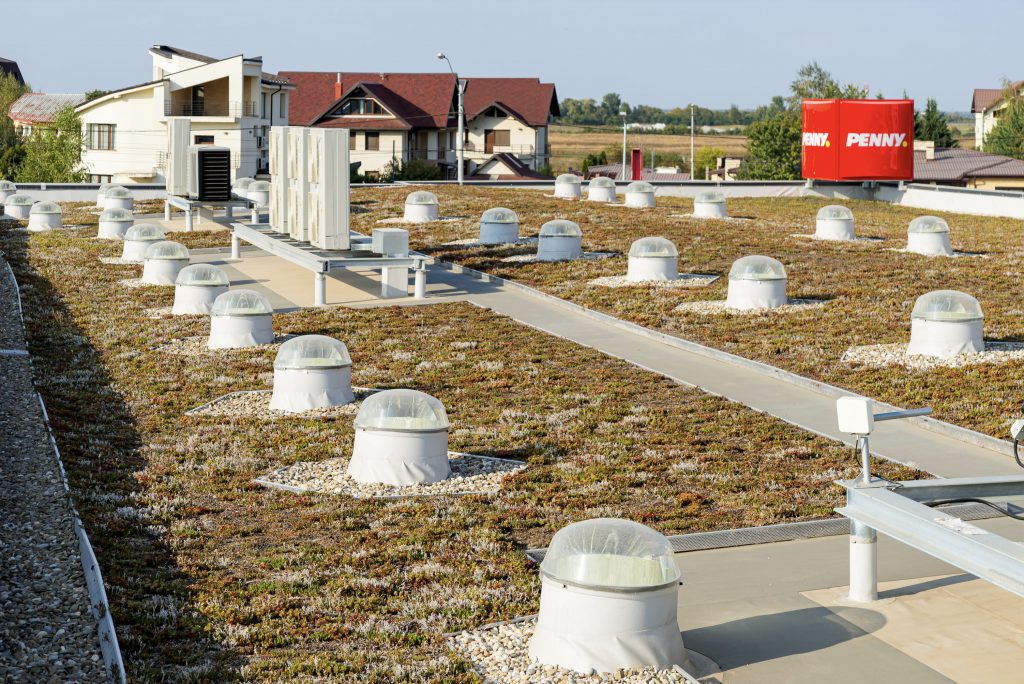New PENNY supermarket in Romania earned a BREEAM rating of Outstanding
Overview
Marking PENNY’s commitment to a new approach that’s focused more on people, digitisation and sustainable development. PENNY Otopeni was designed to be a store where environmental and social solutions are brought together. Successfully built to high sustainability standards, the store was awarded a BREEAM rating of 95.2%.
About
PENNY is a European supermarket chain. It successfully operates across Austria, the Czech Republic, Germany, Hungary, Italy and Romania.
Background
The initial strategy of this project was to gather multiple environmentally friendly solutions already tested on other individual buildings within the network that stood the test of time. This was to prove financially feasibility of sustainable features, such as the green roof or solar panels.
After the BREEAM certification was set as a target, the focus shifted to develop a state-of-the-art store that can become a model for the future developments of the entire retail chain. With a BREEAM International New Construction Outstanding rating as an objective from the very beginning, the entire team had the chance to learn about, consider, and implement strategies. These strategies were all underpinned by making the building a better one, not only for the environment but also for the employees, clients, community and ultimately for the developer.
Solutions
Management – score 95%
A BREEAM Accredited Professional was actively involved since the very beginning of the project. The great cooperation with the project team assured the project was on track for obtaining the highest score in the world for an International New Construction building following the latest version of the standard: BREEAM International New Construction 2016 v2.0.
The management of the construction site was a unique challenge due to the very high speed of development (whole project completed in just a few months) and the quick shifts between the key stages. The contractor had on-site solar panels as well as a GPS tracking system for its entire fleet to be able to monitor its emissions.
Health and wellbeing – score 94%
Daylight is one of the key features of the concept. Innovative light tubes were installed for reduced artificial lighting consumptions. Iterative dynamic modelling found the optimum combination between the number and location of the tubes.
Inclusive safe access is also an important design feature, with clear separations between the vehicles and pedestrian routes, visible signs, crossways and speed bumpers, markings for people with visual disabilities and toilets for clients dimensioned to be accessible by wheelchair users.
Energy – score 100%
Passive design principles like thermal insulation or airtightness were integrated into the design to reduce the energy consumption of the building. The green roof was a measure specified from the start, as it resulted in visible savings on other similar buildings of the developer, especially with summer cooling. Solar panels were found to be feasible as they produce energy during the day, exactly when the largest consumptions with the cold storage rooms occur.
Transport – score 83%
EV charging stations were installed in the most visible spots of the parking.
Land use
An ecology specialist was appointed that, together with the architects, chose the size and combination of species for the vegetation as well as the best location for birdhouses or insect feeders in order to create a connected local biodiversity environment.
A green roof was installed on with building with another implemented as a waste bins roof cover. While climbing plants on the walls, ecological paving and plantings (including pumpkins) make the building the work as an entire ecosystem. All the ecological features form a habitat that significantly supports local native species and the biodiversity.
Materials
A dedicated life cycle assessment was created to guide the materials selection and their specifications. The focus was on long-term impact so energy reduction and the finishes durability and resilience are the key elements that reduce the environmental impact of this building. The standard for the PENNY stores was changed with the removal of the false ceiling, reducing a large quantity of unnecessary material.
Water – score 100%
A detailed monitoring system is used for water consumptions as well as to detect any water leakages on the main ducts. Flow control devices were installed in the toilets that cut the water supply once the space becomes empty, based on presence detection sensors. All the water fixtures have isolation valves. Rainwater is collected and used to reduce the municipal water consumption for WCs.
Pollution – Score 84%
A detailed flood risk assessment was conducted. The measures resulting from the collaboration between the consultants and the design team (drainage, water retention tanks) assure that the property will not be flooded even in a climate change scenario.
Waste
Along with the standard operational waste bins external structure, a complex recycling machine was installed that allow the clients to earn vouchers for the materials they recycle.
Innovation – 8 Credits
The roof of the building, although not seen by PENNY’s customers, is maybe the most innovative feature of the project: 120 photovoltaic panels, 55 solar tubes for bringing natural light in the selling area, the HVAC equipment and 1.000 sqm of green roof.
There is high energy efficiency due to good insulation and air tightness, low energy consumption equipment and a significant part of the roof and facades being covered with photovoltaic panels. All the energy and water meters are monitored with a BMS that is controlled from REWE headquarter.

Benefits
Among the many features of the new green store are: the façade and roof provided with photovoltaic panels, renewable energy sources which convert solar energy into electricity without emissions; the showcases with doors; the rainwater storage system as well as the heat recovery system. Also, the walls of the store have high-performance thermal insulation panels, with built-in ventilation system which helps to reduce resource losses with heating and cooling the interior.
Key achievements included:
Highest BREEAM International New Construction 2016 score worldwide (95.24%)*
Highest BREEAM In-Use v6 Part 1 Asset Performance score worldwide (99.4%)*
First Outstanding BREEAM International New Construction 2016 Post Construction certification
On sunny days, almost 30% of all the electricity consumed by PENNY Otopeni store comes from the photovoltaic panels installed on its roof and façade. This solution is saving us money reflected in the energy costs and is aiming to meet our carbon mission reduction commitment.
Not only local energy generation was considered but also its efficient usage. We installed refrigerated display cases with doors, keeping food safe and at constant temperatures, saving energy and reducing food waste. Now, this is a common practice implemented in whole PENNY network.
In the near future, PENNY plan to eliminate all refrigerants with high GWP from our stores. The company made one further step in this direction and tested at PENNY Otopeni an environmentally friendlier commercial refrigeration system (using CO2 natural refrigerant which also has low operational risks and low maintenance costs).
The principle of preserving biodiversity is reflected by the planting of a series of different species. Around the building there are planted areas with trees; nests and feeders for birds and insects; climbing plants on the façade and a green roof, thus creating a habitat that supports local native species. Besides increasing urban biodiversity and reducing air and sound pollution and CO2 levels in the atmosphere, we aimed with this action to reduce rainwater runoff by reducing flow into city sewers to ensure a longer roof life.
Reflecting on the success of the project, Daniel Gross, General Manager of PENNY | REWE Romania, shared, “Sustainability is not just a trend we choose to refer to, it is part of our long-term strategy. BREEAM certification is an official confirmation of which we are very proud. In addition to the PENNY Otopeni store, we have initiated a series of projects with impact both at the level of employees and at the level of customers and local communities. Also, we have increased the percentage of local suppliers we work with. Many solutions that can now be seen only at PENNY Otopeni, one day will be present in other stores as well.”
He continued, ”The opening of the PENNY Otopeni store represents for us not only the confirmation of a successful expansion strategy, but also the proof of the high attention we pay to sustainability within our business. In the last years, we have invested a lot in projects dedicated to sustainability and tested and implemented environmentally friendly solutions in the newly opened stores. We aim to maintain the same pace of development to reach the target of 600 stores open by 2029 as well as to continue pilot projects for the development of environmentally friendly stores.”





